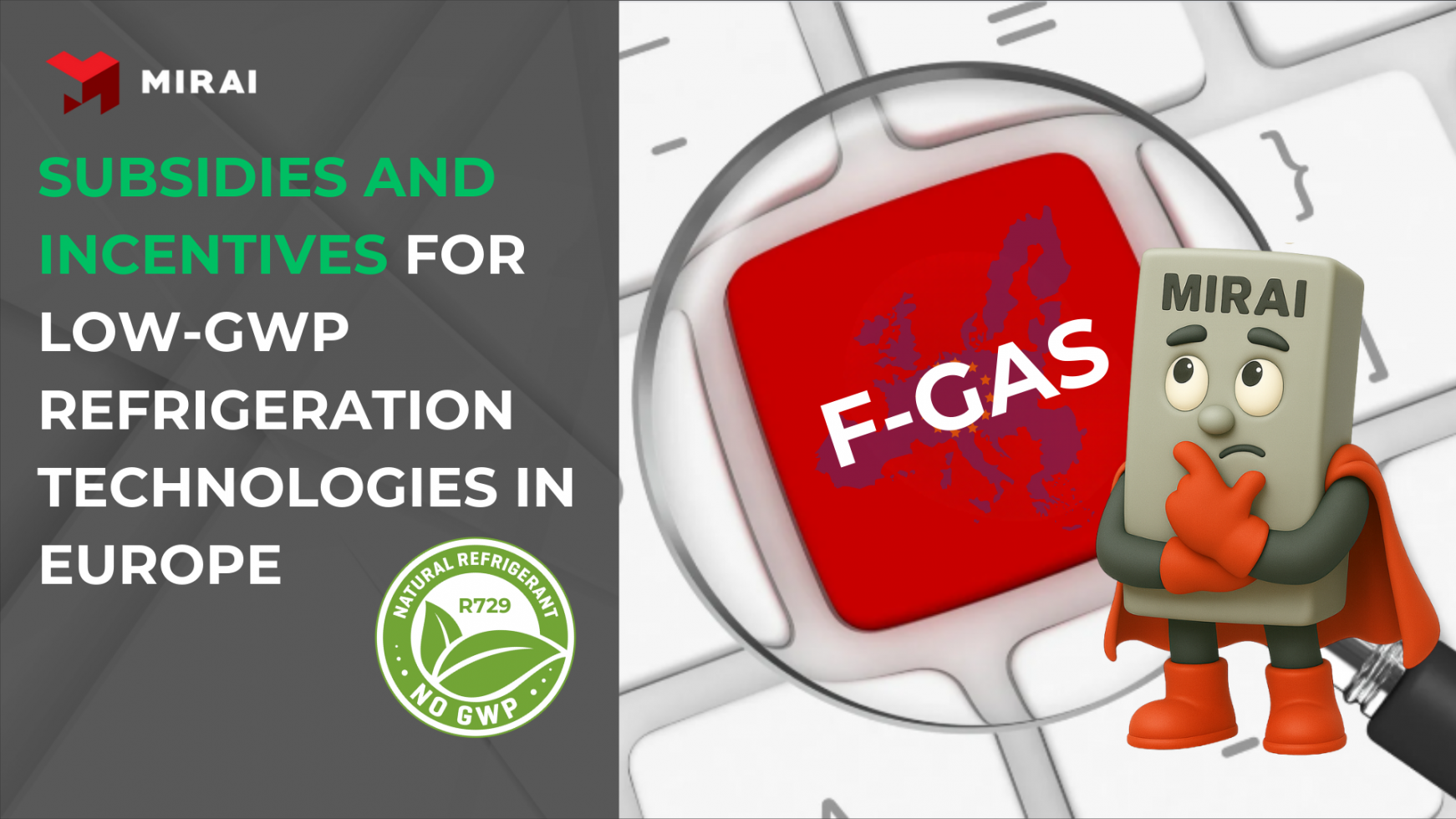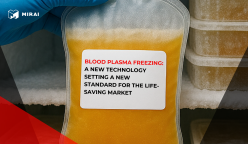Subsidies and Incentives for Low-GWP Refrigeration Technologies in Europe

Europe’s refrigeration and air-conditioning sector is changing significantly. Stricter climate laws and greenhouse gas reduction goals are pushing the shift from high-global warming potential (GWP) refrigerants to natural and ultra-low-GWP alternatives like CO₂, ammonia, and propane.
A major milestone is the updated EU F-gas Regulation (Regulation (EU) 2024/573). This regulation will ban refrigerants with a GWP of 150 or higher in most new air-conditioning and refrigeration systems starting in 2026. This creates a clear technology shift for manufacturers, system integrators, and industrial users, encouraging investments in cooling systems that will be relevant in the future.
At the same time, both national governments and EU institutions are offering financial incentives, tax benefits, and grants to speed up the adoption of low-GWP refrigeration technologies.
National Programs Supporting Low-GWP Technologies
Germany
Germany provides some of the most extensive support in Europe. The BAFA “Kälte-Klima-Richtlinie” program offers grants for commercial and industrial cooling and air-conditioning systems that use non-HFC refrigerants like ammonia, CO₂, and hydrocarbons. The Building Efficiency Grant (BEG) covers up to 40% of the costs for new heat pumps, with a bonus for using natural refrigerants. Starting in 2028, only heat pumps with natural refrigerants will be eligible for public subsidies.
France
From 2019 to 2022, France implemented a corporate tax deduction of 40% for investments in refrigeration and air-conditioning systems that do not use HFCs. This policy encouraged companies to replace HFC-based chillers and heat pumps with alternatives like CO₂, ammonia, or propane, helping them reduce long-term regulatory risks.
Spain
The PIMA Frío program helped modernize supermarket refrigeration systems. Funding supported new installations and retrofits, including energy-saving improvements like adding doors to open display cases. The program aimed to promote low-GWP cooling in retail settings.
Austria
Austria connects heat pump subsidies to refrigerant GWP. Systems with a GWP below 1500 receive the maximum grant, while support decreases for technologies with higher GWP. The Clean Heating initiative also offers up to 100% cost coverage for low-income households switching from fossil fuels to heat pumps using natural refrigerants.
Other EU/EEA Countries
The United Kingdom follows the EU F-gas phase-down model but currently does not have specific incentives for natural refrigerants beyond general support for heat pumps. Nordic countries like Denmark, Norway, and Sweden impose high taxes on HFCs to discourage high-GWP refrigerants. Italy includes natural refrigerant requirements in its public procurement processes. Across Europe, the GWP 150 limit in 2026 remains the strongest market driver.
EU-Level Funding and Financing
The European Union adds to national programs with significant funding for low-GWP and sustainable cooling technologies:
- LIFE Programme — Supports pilot projects using natural refrigerants and improving refrigerant recovery and recycling.
- Horizon Europe & EIC Accelerator — Funds research and innovation in efficient refrigeration cycles, ultra-low-GWP refrigerants, and new materials.
- Innovation Fund — Provides large-scale support for industrial decarbonization, including innovative refrigeration technologies.
- InvestEU & European Investment Bank (EIB) — Offer loans, guarantees, and blended financing to develop sustainable cooling infrastructure and district energy systems.
- Structural and Cohesion Funds — Co-finance regional and national energy-efficiency and clean cooling projects.
These funds allow companies to combine national subsidies with EU financing for both research and development and large-scale implementation.
MIRAI INTEX — Future-Proof Cooling
MIRAI INTEX systems fully support Europe’s low-GWP transition. Our refrigeration units use air as the only refrigerant, making their GWP equal to 0. This means no exposure to F-gas phase-downs and full regulatory security.
MIRAI technology delivers stable performance from +90 °C to –160 °C. It has a plug-and-play design for easy integration. Our systems are already in use in demanding sectors like biotechnology, pharmaceuticals, food processing, and electronics manufacturing.
For technical teams and procurement managers, this provides a clear path to meeting regulations, lowering long-term operating risks, and accessing various funding and subsidy opportunities.
Strategic Importance
The combination of stricter refrigerant regulations and increasing incentive programs makes switching to low-GWP cooling both an environmental duty and a good financial choice. Organizations that invest now in natural refrigerant systems can enjoy:
Guaranteed compliance with the 2026 EU GWP limits.
Access to national grants and EU funding. Lower lifetime costs by avoiding HFC taxes and supply fluctuations.
Stronger sustainability and ESG standing.
MIRAI INTEX helps its partners navigate available incentives, understand changing regulations, and provide high-performance, air-cycle refrigeration systems geared for the future.

